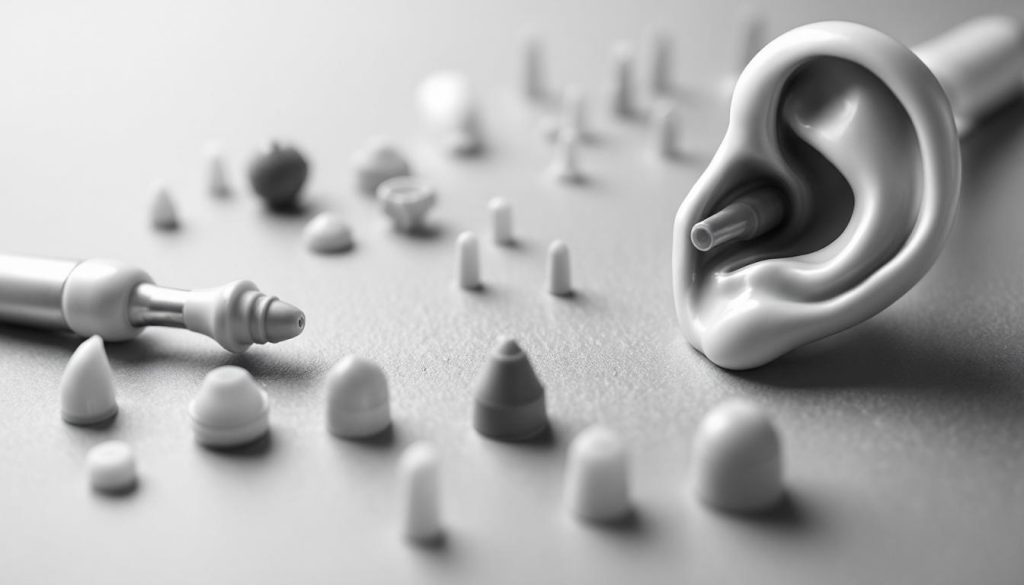Maintaining clean ears free from excessive wax is important for optimal hearing and general ear health. While traditional cotton swabs are widely used, they often push wax deeper into the ear canal, which can cause discomfort, blockage, or even damage. To address this, a variety of ear vacuum cleaners are available, designed to remove earwax safely using controlled suction technology. These devices generally feature soft silicone tips and adjustable suction levels to provide gentle yet effective cleaning for all ages.
Several popular models on the market demonstrate this approach’s appeal. For instance, the TEADZ Ear Vacuum offers five suction levels to customise the strength of wax removal, with a soft silicone head designed to reduce ear discomfort. It operates quietly, at noise levels lower than normal conversation, making it especially suitable for children and pets. Similarly, the QIDUHUQI Electric Earsavvy kit utilises a high-speed motor for automatic vacuum suction, combining portability with hygiene and safety through flexible soft tips. The znvwki Earsavvy cordless vacuum cleaner also promotes ease of use, featuring one-button operation and replaceable silicone heads to enhance hygiene and comfort.
More advanced models incorporate additional features, such as visual assistance during cleaning. The LEIPUT Ear Wax Removal Kit includes a 1080P HD camera with LED lights to enable users to see inside the ear canal in real time. This visual aid helps prevent injury by allowing precise and safe wax removal. The Anyear Flexible Ear Wax Removal Tool goes further, delivering professional-grade clarity with a 10MP HD otoscope and flexible silicone tube, supported by a comprehensive 16-in-1 kit suitable for ears, nose, and throat examinations.
When selecting an ear vacuum cleaner, consumers should consider factors such as adjustable suction power, tip material, ease of use, noise levels, and whether the device offers visual guidance. Waterproof and washable parts also improve hygiene and longevity. Safety certifications and user reviews provide additional assurance regarding performance and risk mitigation.
Despite these technological advancements, medical opinion on the use of home ear vacuum cleaners remains cautious. Although microsuction—a procedure performed by trained professionals—uses gentle suction to remove wax effectively and safely, it requires clinical expertise to avoid complications. Microsuction doesn’t expose the ear canal to moisture, reducing infection risks, and is often preferred for individuals with perforated eardrums or previous ear surgeries.
However, experts from institutions like Harvard Health advise against self-administered ear cleaning devices, including ear vacuum cleaners, due to potential hazards. Inserting any instrument into the ear canal can lead to injuries such as scratches, bleeding, or even eardrum perforation. The ear is naturally self-cleaning; routine removal of earwax at home can disrupt this process and cause harm. Instead, they recommend that people experiencing symptoms like hearing loss, discomfort, or blockages consult healthcare professionals who can safely manage wax buildup using appropriate treatments or professional removal techniques.
Furthermore, some otolaryngologists highlight the specific risks associated with ear vacuum cleaners. The negative pressure generated by these devices may stretch or perforate the delicate eardrum, potentially resulting in permanent damage that needs surgical repair. Due to this risk, medical advice typically emphasises the importance of consulting ENT specialists for safe ear care rather than relying on over-the-counter suction devices.
Professional ear cleaning, performed by trained clinicians, offers several benefits beyond wax removal. It helps prevent hearing loss, reduces the risk of ear infections, and alleviates discomfort from excessive wax. Medical professionals use specialised tools to ensure thorough cleaning while protecting the sensitive structures of the ear canal and eardrum.
In summary, while modern ear vacuum cleaners offer a promising, user-friendly alternative to avoid the pitfalls of cotton swabs, they are not without risks. Their controlled suction technology and design improvements aim to enhance safety and comfort. Nevertheless, given the ear’s complex anatomy and vulnerability, seeking professional advice and treatment remains the safest course for managing earwax issues, especially for those with preexisting ear conditions or persistent symptoms.
📌 Reference Map:
- Paragraph 1 – [1], [7]
- Paragraph 2 – [1]
- Paragraph 3 – [1]
- Paragraph 4 – [2], [5]
- Paragraph 5 – [3], [7]
- Paragraph 6 – [4]
- Paragraph 7 – [6]
- Paragraph 8 – [1], [3], [4], [6]
Source: Noah Wire Services

